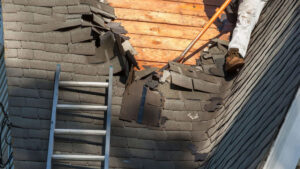Insulation and Siding: How to Keep Your Home Cool and Energy-Efficient
Summer brings warm weather, longer days, and plenty of opportunities to enjoy the great outdoors. However, it also brings higher temperatures that can make keeping your home cool and energy-efficient a challenge. One of the most effective ways to combat the summer heat is by ensuring your home’s insulation and siding are up to the task. In this blog, we’ll explore how insulation and siding work together to keep your home comfortable and energy-efficient, and we’ll provide tips on selecting the best options for your needs.
The Role of Insulation
Insulation is a critical component in maintaining a comfortable indoor temperature. It works by reducing the amount of heat that enters your home during the summer and preventing cool air from escaping. Here are some key points about insulation:
- Types of Insulation: Common types include fiberglass batts, spray foam, cellulose, and rigid foam boards. Each type has its own benefits and applications.
- R-Value: The effectiveness of insulation is measured by its R-value, which indicates its resistance to heat flow. Higher R-values provide better insulation.
- Installation Areas: Insulation should be installed in walls, attics, and floors to create a thermal barrier throughout your home.
Here at New Look Exteriors, we are skilled installers of Owens Corning’s ATTICAT® PINK® Blown-In Insulation. The attic is one of the easiest and best places to add insulation to improve the comfort and energy efficiency of your home.
Attic insulation is not only essential for keeping your home warm in the winter but also plays a crucial role in keeping your attic and the rest of your home cool during the summer. Here’s how attic insulation helps achieve this:
- Thermal Barrier: Attic insulation acts as a thermal barrier, slowing down the transfer of heat. During the summer, the sun’s rays beat down on your roof, causing it to heat up. Without proper insulation, this heat would easily transfer into your attic and then into the rest of your home, making it uncomfortably warm. Insulation prevents this by providing a layer of material that resists heat flow, keeping the attic cooler.
- Reflective Properties: Some insulation materials, like reflective or radiant barrier insulation, are designed to reflect radiant heat away from the attic. These materials have a reflective surface that bounces the heat back, preventing it from penetrating the attic space. This can significantly reduce the amount of heat that enters your attic, keeping it cooler.
- Reducing Heat Buildup: Insulation helps to reduce heat buildup in the attic by minimizing the amount of heat that enters. This is particularly important because a cooler attic means less heat is transferred to the living spaces below, which helps keep the entire home cooler. This can lead to a more comfortable indoor environment and reduced reliance on air conditioning.
- Air Sealing: Effective insulation also involves sealing gaps and cracks in the attic, preventing hot air from outside from entering the attic space. Air sealing is an important part of the insulation process because even small gaps can allow a significant amount of heat to infiltrate the attic, counteracting the benefits of the insulation.
- Maintaining Consistent Temperatures: By keeping the attic cooler, insulation helps to maintain more consistent temperatures throughout the home. This means that your cooling system doesn’t have to work as hard to keep your home at a comfortable temperature, leading to increased energy efficiency and lower cooling costs.
- Ventilation: While not a direct function of insulation, proper attic ventilation works hand-in-hand with insulation to keep the attic cool. Ventilation systems, such as ridge vents, soffit vents, and attic fans, help to remove hot air from the attic, preventing heat buildup. Combined with effective insulation, this creates a balanced system that keeps the attic and home cooler.
Learn more about how ATTICAT® PINK® Blown-In Insulation can help you & your home HERE.
The Importance of Siding
Siding not only enhances the aesthetic appeal of your home but also plays a crucial role in its energy efficiency. Quality siding acts as a protective layer that shields your home from external elements, including heat. Here’s how siding contributes to a cool and energy-efficient home:
- Reflective Properties: Some siding materials, such as vinyl or fiber cement, can reflect solar radiation, reducing the amount of heat absorbed by your home.
- Insulated Siding: Insulated siding adds an extra layer of insulation, improving your home’s thermal resistance and energy efficiency.
- Durability: Good siding protects your home from weather damage, which can compromise insulation and lead to higher energy costs.
Choosing the Right Insulation and Siding
Selecting the right insulation and siding materials can significantly impact your home’s energy efficiency. Here are some tips to help you make the best choices:
- Assess Your Needs: Consider the climate in your area, your home’s current insulation levels, and your energy efficiency goals.
- Compare Materials: Research different insulation materials and siding options. For insulation, look at R-values and installation methods. For siding, consider durability, maintenance, and reflective properties.
Professional - Consultation: Consult with a professional to evaluate your home’s specific needs and receive recommendations tailored to your situation.
Our most popular & our highest recommended siding is the ASCEND® Composite Cladding System which offers an energy rating of R-1.6 to help reduce energy loss.
Tips for Maximizing Efficiency
- Seal Gaps and Cracks: Ensure all gaps and cracks around windows, doors, and other openings are sealed to prevent air leaks.
- Ventilation: Proper ventilation in attics and other areas helps regulate temperature and prevents heat buildup.
- Regular Maintenance: Regularly inspect and maintain your insulation and siding to ensure they remain effective.






